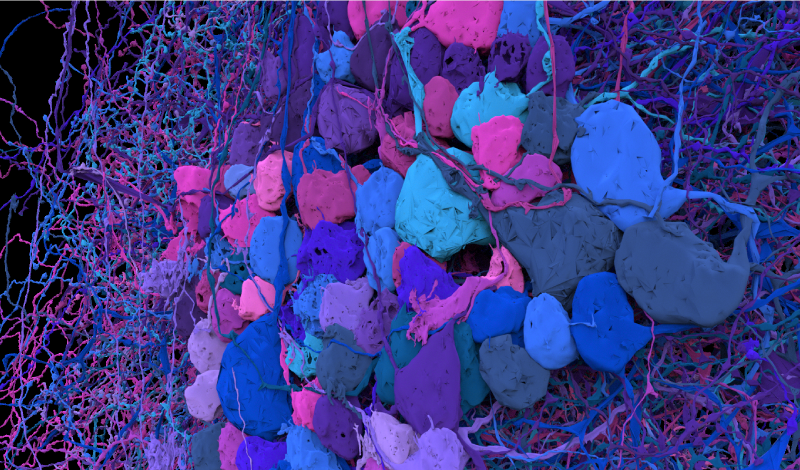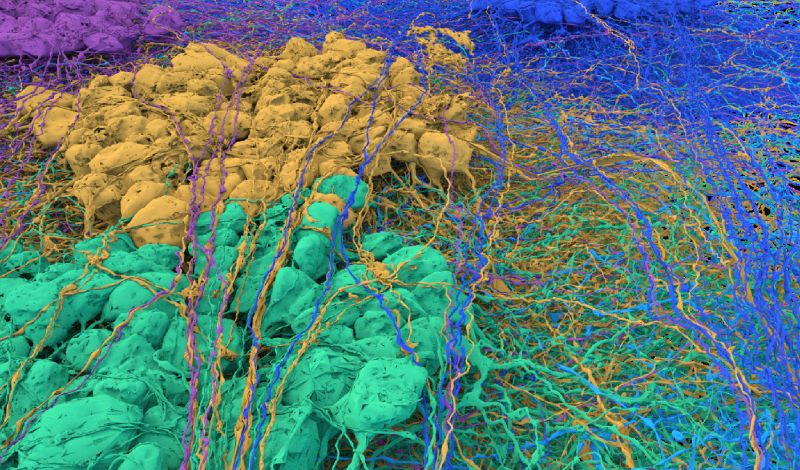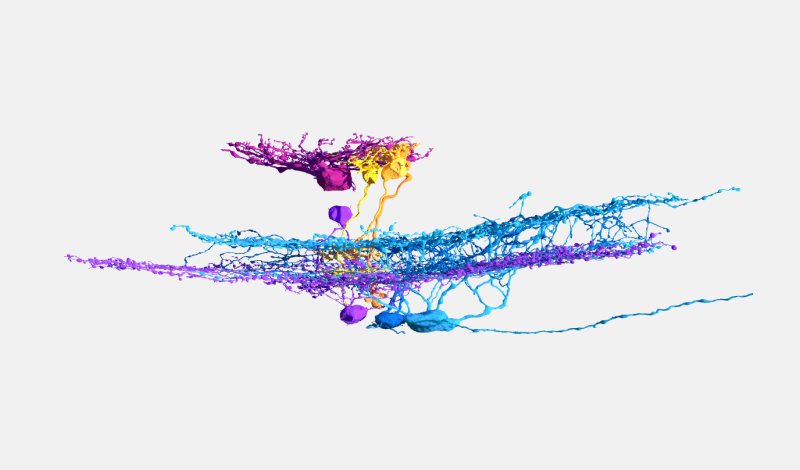
The retina is a multilayered neural tissue at the back of the eye that converts light into electrical signals through photoreceptor cells. Several layers of cells perform the first steps of visual computation, including contrast regulation, object detection and motion perception, before sending information through the optic nerve to the brain. We acquired and segmented a volume (1 mm*1 mm*80 µm mm3) of the mouse retina, comprising the ganglion cell layer, inner plexiform and nuclear layers, and starting with the outer plexiform layer. The dataset is currently undergoing proofreading. EyeWire II is an online community for proofreading, annotation, and scientific discovery in the new mouse retinal dataset. As of January 2025, the dataset has been segmented and proofreading has begun.

A community of neurobiologists, computer scientists, proofreaders, and citizen scientists who help build the EyeWire II dataset by mapping and identifying neurons. Join and contribute community data for your lab to appear.

The core support came from National Institutes of Health (NIH), Princeton Neuroscience Institute (PNI). The Seung lab receives support with compute resources from Amazon and Google. The Seung and Euler labs were supported by the NIH (5U01N5090562). The Euler and Berens labs were supported by the DFG (SPP 2041, 313856816). The Berens lab received funding from the ERC (NextMechMod, 101039115) and the Hertie Foundation. Eyewire II work in the Schwartz lab is supported by an unrestricted grant from Research to Prevent Blindness (RPB) to the Northwestern University Department of Ophthalmology.